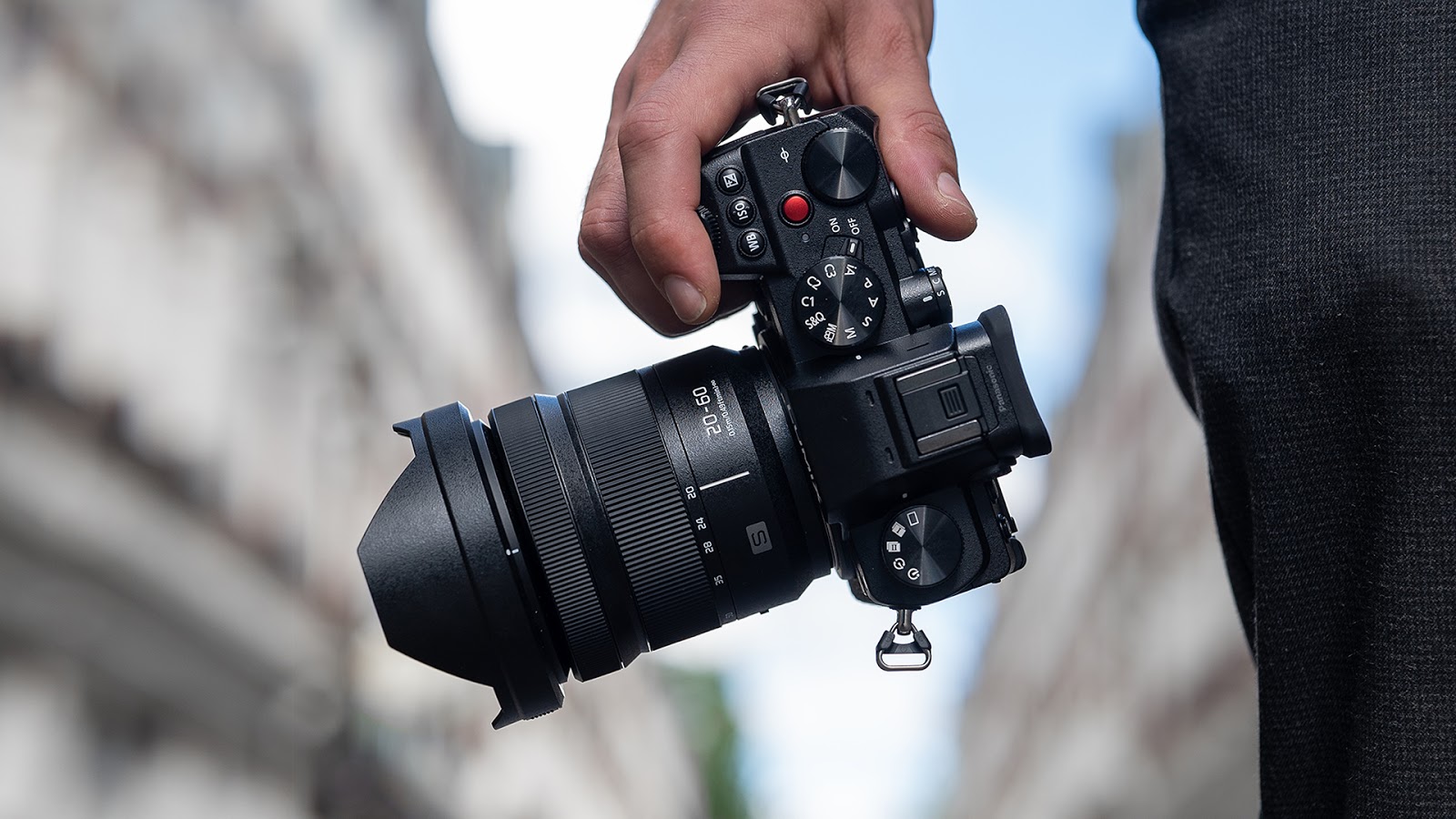
Today Panasonic announced the full specifications of its new LUMIX S5 full-frame mirrorless camera, along with some surprises for existing S1 owners.
 The full specifications of the Panasonic LUMIX S5 have been announced. Image: Panasonic.
The full specifications of the Panasonic LUMIX S5 have been announced. Image: Panasonic.
Read our first hands on with the Panasonic S5 here.
Announced last month in name only, the Panasonic S5 has been the subject of rumour for a while now. But today the full details of the new camera can be revealed.
RedShark has been in possession of the S5 in the runup to the announcement and we will be bringing you a first hands on preview later today. However for now let’s look at what the S5 brings to the table, along with those ‘easter eggs’ for existing S1 camera owners.
The Panasonic S5 would appear on initial inspection to be a successor to the S1. In actuality, while it could well fulfil that role, and in fact does, it plays on the popularity of the GH5 and is actually being targeted as a full-frame equivalent of that camera, hence the S5 moniker.
It will retail for less than the S1, at £1799 for the body only. With a kit version available that includes a 20-60mm f/3.5-5.6 lens for £1999.99. From today until the 30th September the company is running a pre-order offer of a complimentary DMW-XLR1 audio interface or a Sigma 45mm f/2.8 lens by redemption.
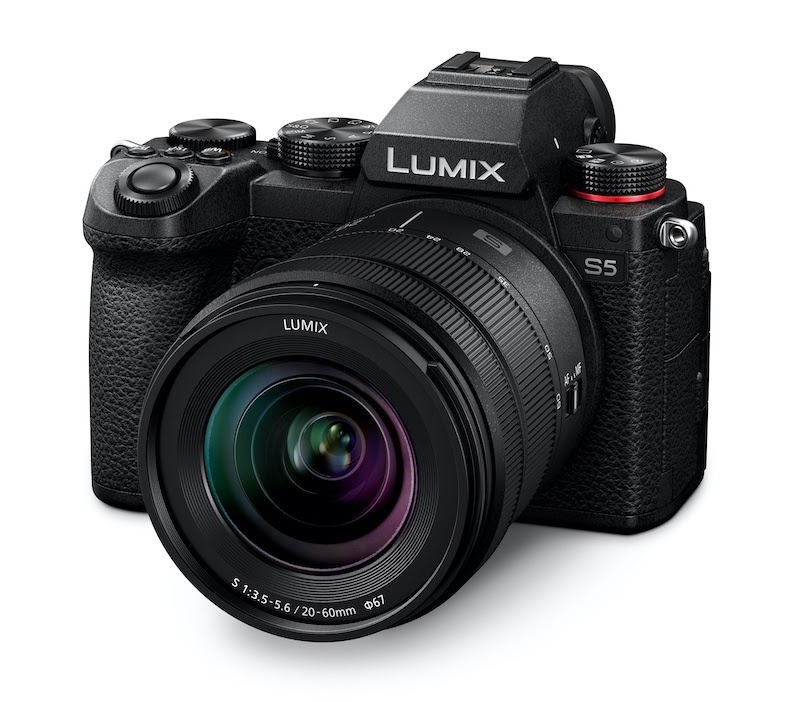
The Panasonic S5 with the new 20-60mm f/3.5-5.6 kit lens. Image: Panasonic.
Main features of the Panasonic LUMIX S5
The S5 is much smaller and lighter than the S1, which it will inevitably be compared to. It has an entirely new battery, but it still retains the build quality of the other S1 series cameras.
It uses a 24.2MP full-frame sensor. The inclusion of dual native ISO functionality indicates that this may well be the same sensor or variation thereof that is used in the S1H.
Being a less expensive camera than the S1, certain things have been done to bring the price down while still maintaining a high quality. For instance there are some key differences between the viewfinder and monitor on the S5 compared to the S1. For example the S5’s EVF is 2,360k dots vs the 5760k dots of the S1 series.
However by contrast the S5 also features a fully articulating LCD display on the rear of the body, which means that it is not only easier to position for awkward shots, but in combination with the smaller size makes it usable for vlogging and self shooting, too.
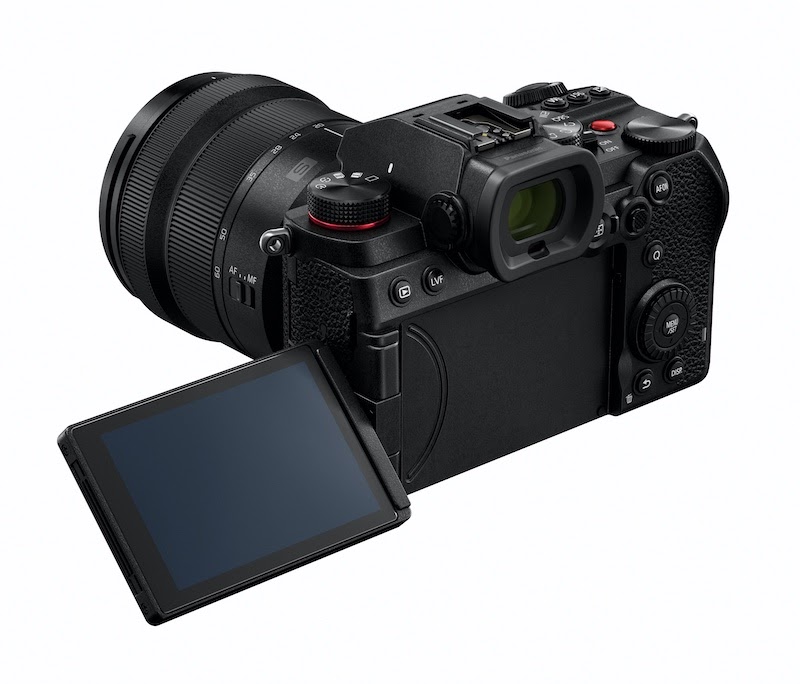
The Panasonic S5 has a fully articulating LCD screen. Image: Panasonic.
When it comes to stills the S5 is also ever so slightly slower in burst mode than the S1, offering 5fps AFC in raw vs 7fps on the S1. Although as you’d expect from a LUMIX camera there’s also a 4k and 6K burst mode available for ultra high speed photography, which records to an H.265 wrapper.
The smaller body on the S5 has necessitated the use of a micro HDMI connector, too, which was possibly a necessary compromise to keep the size down.
So far, so normal. But there are two stand out features of the S5 that have been improved over the S1 series. Although S1 owners need not despair too much as we’ll see later.
The body of the S5 measures 132.6 x 97.1 x 81.9mm and weighs in at 630g. It features the same robust weatherproofing that we’ve come to expect from the S series cameras.
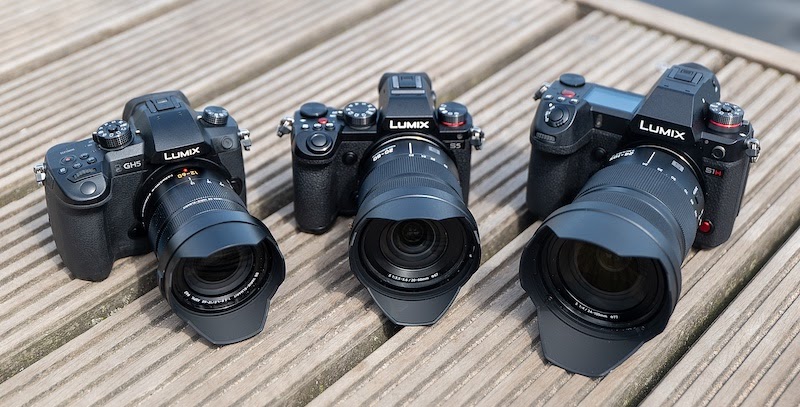 The LUMIX GH5, S5, and S1H. The size differences are stark. Image: Panasonic.
The LUMIX GH5, S5, and S1H. The size differences are stark. Image: Panasonic.
Improved autofocus speed
The S5 addresses one issue that has caused quite a lot of discussion on forums, and that’s the autofocus speed of the S series. Panasonic uses contrast detection autofocus for its cameras because it believes it offers better overall picture quality.
Phase Detection autofocus requires on chip systems, which Panasonic claims can hinder image quality. The LUMIX cameras utilise both contrast detection autofocus and Panasonic’s own DFD (Depth From Defocus) system, which analyses separate images sharpness to determine how far the lens focus needs to shift. This is all done faster than you can be aware of, but requires that the camera has very specific lens information.
The autofocus system for the S5 offers a claimed 2x increase in speed over the previous version found in the S1 initially. However, on this front S1 owners can rest easy. Panasonic is implementing the same speed improvements into the S1 series of cameras via a firmware update later in the year. So at least this should offer solace to owners who feel that their purchase has been superceded all too quickly.
In addition to the overall speed increase, the human and animal recognition system has been drastically improved to better detect objects at a distance as well as in many more situations, such as when a person has their back turned to the camera. It just goes to show what you can do with better programming.
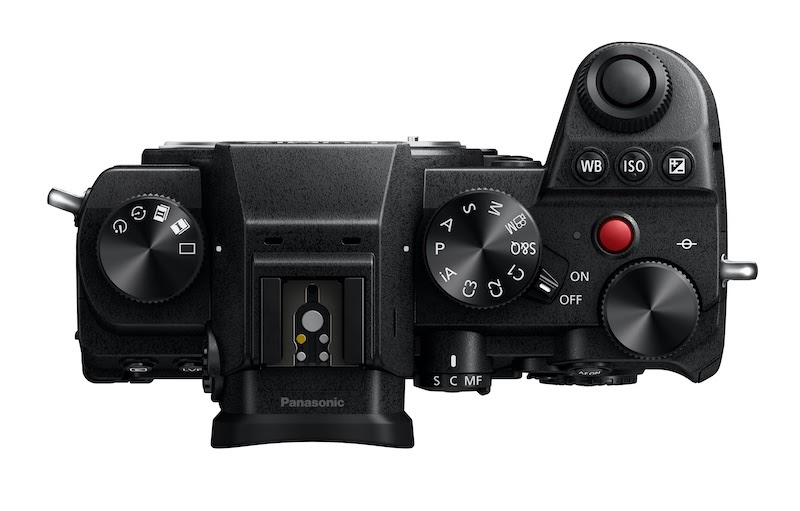 Top view of the Panasonic S5. A more compact body has meant that there’s no top status display. Image: Panasonic.
Top view of the Panasonic S5. A more compact body has meant that there’s no top status display. Image: Panasonic.
ProRes RAW recording
Another notable feature for the S5 will also become available later on via a firmware update. And that’s the ability to output 5.9K raw over HDMI to, yep you’ve guessed it, an Atomos Ninja V.
ProRes RAW recording from the S5 will be available in the following flavours: 5.9K (5888x3312) 29.97p/25p, 4K (4128x2176) 59.94p/50p, Anamorphic 3.5K (3536x2656)/50p.
This might ruffle some feathers amongst S1 owners, not least because the S1R will be gaining 5K internal recording via its own firmware update. But we have to be fair here. The S1 is nearly two years old now, and in the intervening time there has been a number of releases from rival manufacturers offering ProRes RAW recording on numerous devices.
Could Panasonic have enabled 4K raw on the S1 as a goodwill gesture? We will never know. It could be that the S1 simply doesn’t have the hardware capability. Raw recording isn’t absolutely necessary. With the S1 you still have an incredibly highly capable camera that records excellent internal 10-bit video images, as well as externally to the Ninja V. It is still nothing to be sniffed at. Remember, FOMO doesn’t get you work!
Additionally video extra video assist features will become available for the S5 in the firmware update, including vectorscope display, master pedestal adjustment, SS/gain operation (SEC/ISO, ANGLE/ISO, SEC/dB)
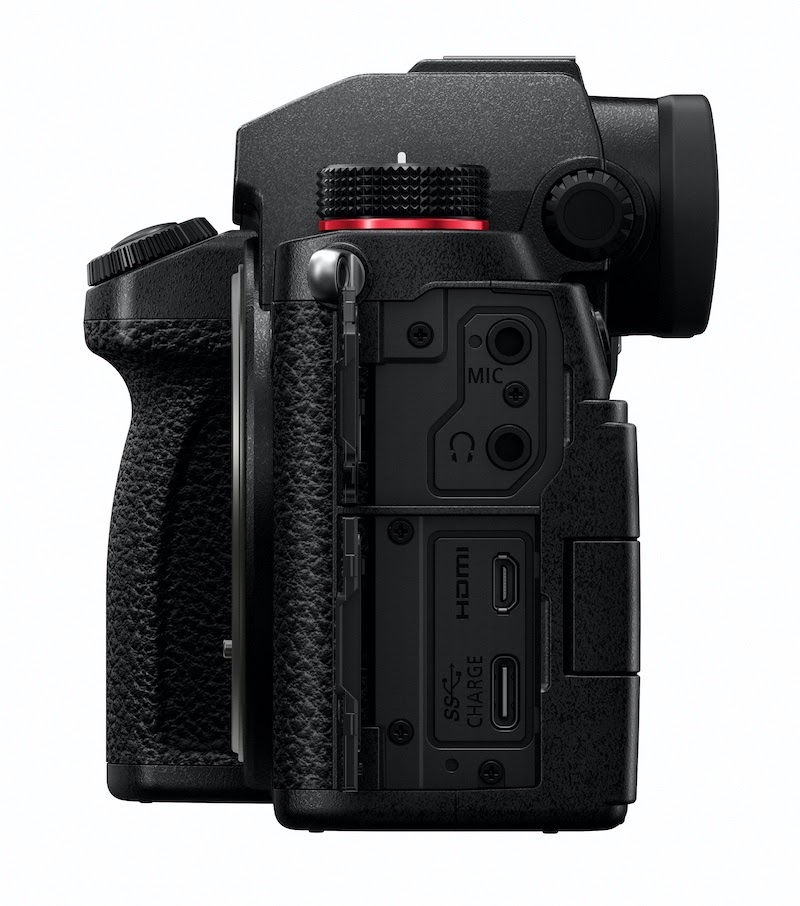 Side view of the S5 showing the USB-C and micro HDMI ports. Image: Panasonic.
Side view of the S5 showing the USB-C and micro HDMI ports. Image: Panasonic.
Internal video recording on the S5
When it comes to internal recording the S5 offers very similar options to the S1. There are too many modes to list here, suffice to say that 10-bit 4:2:2 150mbps H.264 at up to 30p is available, whilst 50/60p 10-bit 4:2:0 at 200mbps is available with a S35 crop. V-Log/V-Gamut modes, which are based upon the Varicam colour science are included as standard, rather than as an upgrade as they were for the S1.
This latter mode is another advantage for the S5 over the S1, with the latter camera only able to record 50/60p in 8-bit 4:2:0 at 150mbps. Video is recorded to SD card via one of the two card slots.
Furthermore the S5 can also record embedded timecode in MOV mode as well as having an anamorphic 4:3 option available.
The S5 doesn’t have an active cooling system like the S1H, and combined with the more compact body video record times in 10-bit modes are limited to 30 minutes continuous recording. 8-bit 4:2:0 modes have no limit however.
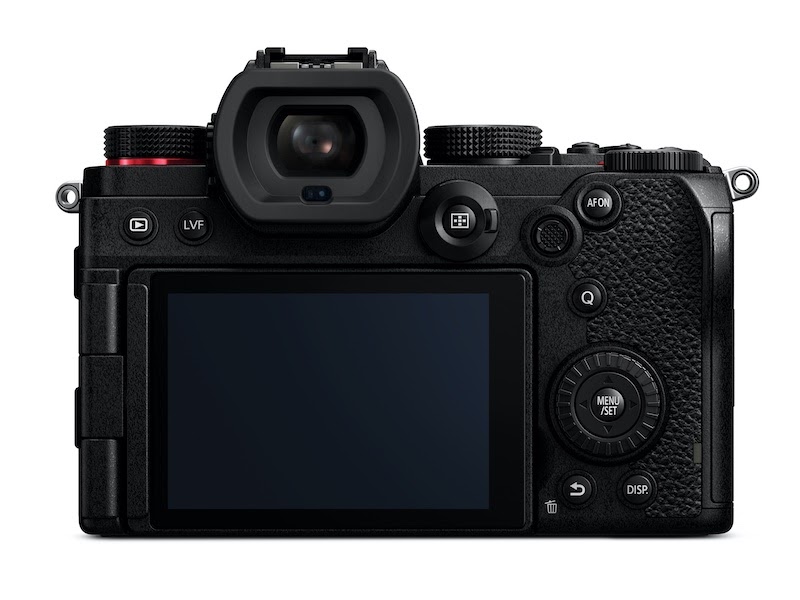 Rear view of the S5. Image: Panasonic.
Rear view of the S5. Image: Panasonic.
Conclusions
As I mentioned previously we will be bringing you an exclusive hands on with the S5 in the next few hours, with much more information about the S5’s build and what it is like to use.
It would be slightly churlish of us to pretend that existing S1 owners won’t be affected by this announcement. The S1 did, and still does retail for more than the S5, but has less capability, particularly when it comes to the forthcoming ProRes RAW output.
The S5 is much smaller and lighter than the S1, too, meaning that it is less fatiguing on a long day’s shoot. The S1H is far less impacted by the announcement due to its active cooling system, unrestricted video recording, OLPF filter, and integer cinema 24p capability.
So the question then becomes one of whether Panasonic will EOL the S1 while keeping the S1R for stills focus and the S1H as a highly capable cine mirrorless model? Whilst we haven’t been told anything to this effect it is difficult to see how S1 sales could be maintained in the face of a less expensive camera that has more features within the same model range. Even if Panasonic hasn’t already taken the decision itself, it is tricky to see how the market won’t make the decision on its behalf.
However this is not a criticism of Panasonic. It is anything but that. As a company Panasonic has had to adapt to the marketplace, and as we have seen, over the past year that market has been moving at a very fast pace indeed. If Panasonic hadn’t updated the range with the S5 then users might have accused it of the opposing problem, standing still and doing nothing.
As it stands, with the S5 Panasonic has shown that it has listened to many of the criticisms levelled against the S1 and addressed them directly in a smaller, lighter, less expensive package.
Stay tuned for our first hands on with the S5 later today.
Tags: Production


Comments